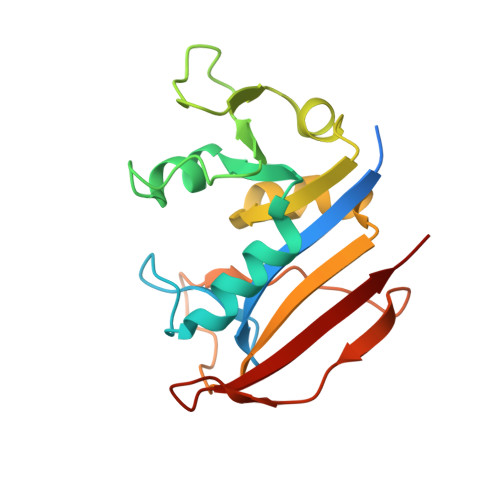Mycobacterium tuberculosis Dihydrofolate Reductase Reveals Two Conformational States and a Possible Low Affinity Mechanism to Antifolate Drugs.
Dias, M.V., Tyrakis, P., Domingues, R.R., Paes Leme, A.F., Blundell, T.L.(2014) Structure 22: 94-103
- PubMed: 24210757
- DOI: https://doi.org/10.1016/j.str.2013.09.022
- Primary Citation of Related Structures:
4KL9, 4KLX, 4KM0, 4KM2, 4KNE - PubMed Abstract:
Inhibition of the biosynthesis of tetrahydrofolate (THF) has long been a focus in the treatment of both cancer and infectious diseases. Dihydrofolate reductase (DHFR), which catalyzes the last step, is one of the most thoroughly explored targets of this pathway, but there are no DHFR inhibitors used for tuberculosis treatment. Here, we report a structural, site-directed mutagenesis and calorimetric analysis of Mycobacterium tuberculosis DHFR (MtDHFR) in complex with classical DHFR inhibitors. Our study provides insights into the weak inhibition of MtDHFR by trimethoprim and other antifolate drugs, such as pyrimethamine and cycloguanil. The construction of the mutant Y100F, together with calorimetric studies, gives insights into low affinity of MtDHFR for classical DHFR inhibitors. Finally, the structures of MtDHFR in complex with pyrimethamine and cycloguanil define important interactions in the active site and provide clues to the more effective design of antibiotics targeted against MtDHFR.
Organizational Affiliation:
Department of Biochemistry, University of Cambridge, Tennis Court Road, Cambridge CB2 1QA, UK; Laboratório Nacional de Biociências (LNBio), Centro de Nacional de Pesquisa em Energia e Materiais, Campinas, (CNPEM), São Paulo 13083-100, Brazil. Electronic address: bertacine@gmail.com.
















